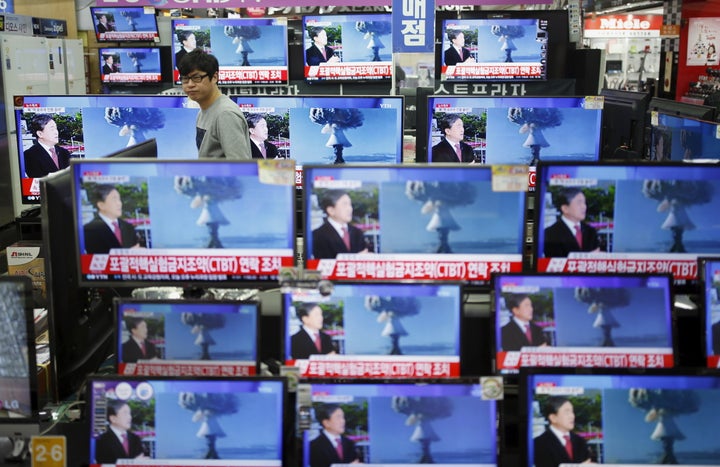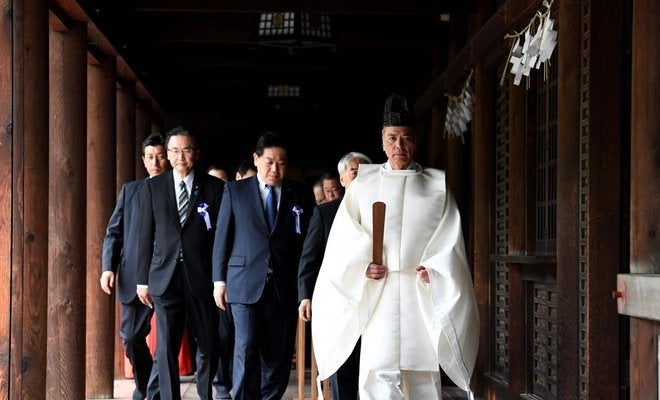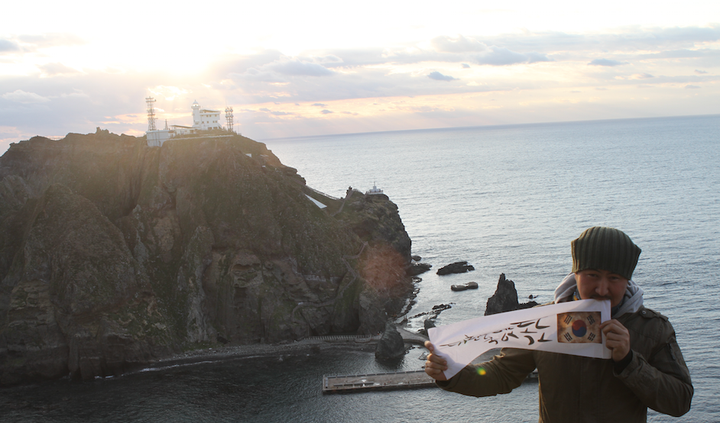“Hey, mom! I survived the Cuban Missile Crisis!” declared my 11 year-old on Easter morning 2017 here in South Korea where we live and then hunted for chocolate. The night before, TV/Internet Zero was the formula for sleep because Washington pundits were already invoking the same history.
A week later, this dangerous situation is only getting worse, with bloggers laying odds on another North Korean nuclear test fractured into subgroups of the likelihood and substance of America’s response.
The videogame informed hoopla over what kind of weapon would destroy what and how many millions of people would die often ignores that the United States and North Korea are already technically at war. You don’t have to be a Game of Thrones fan to know that this is the moment when words matter.
In the mix, however, American Secretary of State Rex Tillerson has announced that diplomacy—as in words ‘n stuff—isn’t really for him. President Donald Trump’s hallucinogenic explanation of an American “armada” heading this way—which wasn't but now is—dovetails with regional leaders who have settled on brinksmanship as the cure. Russia nullified an otherwise unanimous statement from the U.N. Security Council condemning North Korea and has increased troops on its sliver of a border with North Korea. Additionally, we’ve learned that Trump learned everything he needed to know about North Korea in Chinese kindergarten, including (incorrectly) that Korea “used to be part of China.”
If you're South Korean—or not, but live in Seoul together with 25 million other people—tonight you might wonder whether anyone cares if you live or die.

Keep calm and carry on? Candidates in South Korea’s May 9 presidential election, rushed ahead by the astonishingly peaceful removal of former President Park Geun-hye, are working hard to premise the issues South Koreans want answered such as entrenched inequality and corporate graft. Yet headlines constantly jump off cellphones that this crisis is just getting warmed up, and everywhere stock footage of North Korean missiles worms its way in.
So what about America’s other ally in the neighborhood? Vice President Michael Pence was just in Japan, “sword standing ready” to defend it.

Could Tokyo work together with Seoul as security analysts routinely beg? Japanese tourism to South Korea is up 21% in recent months, surely there is a chance to strengthen ties. Maybe Tokyo could even gain public confidence here for the much disputed military sharing agreement that South Korea recently signed with Japan for moments just like this?
Mmm… not so much.
Unfortunately, while South Korean and Japanese navies conducted “joint exercises” with the United States in waters off of Korea, to the displeasure of Seoul and the American military command here, Japanese Prime Minister Abe Shinzo and his team of pit bulls loudly discussed the removal of the nearly 60,000 Japanese nationals living in and visiting South Korea. No other foreign government did this, perplexing Japanese in Seoul like my students to wonder what their government was talking about.
Additionally, Abe’s National Security Council declared it would draft a plan for the millions of refugees that would flood into the sea and head to Japan. Deflecting concern away from why this had not been considered before, government spokespeople reassured Japanese that careful screening would discern which Koreans would be allowed ashore. At once this raised South Korea’s collective disgust with the Abe administration and fanned the fear factor within Japan just enough to freak out people such as the front man for the ‘80s Brit punk band “Echo & the Bunnymen,” who escaped from Tokyo before playing a single of his scheduled discordant Cold War era notes.
And then, if it did not seem possible for this Japanese government to prove itself a less reliable partner to South Korea and the region, it did. On April 21, over 90 of its current members celebrated spring at Tokyo’s infamous shrine to war dead, Yasukuni, toxically ensuring that the region’s history wars were the missing ingredient in this perilous stew.

In choosing brinksmanship as the path to success, the United States has reiterated its commitments to defend South Korea and also Japan, making something else that the Abe administration is doing as much if not more of a concern to Washington’s strategic planners. Also on April 21, disaster response specialists from throughout Japan gathered in Tokyo to hear plans for a coordinated national response in the event of a North Korean attack on “Japanese territory and territorial seas.” Before anyone avers that this is a totally helpful thing to do, please consider the brand new map of “Japanese territory” that Abe’s cabinet office published on April 13 and its outsize focus on islands in the sea between Japan and Korea that the map emphatically defines as “Japanese territory.” In reality, South Korea has guarded these islands as “Korean territory” since 1954, and they had long been under Korean control before Japan usurped all of Korea during the first half of the 20th century.

The Easter 2017 crisis that didn’t happen has made war more conceivable in Northeast Asia. While there is little space for productive discussion of the region’s past, there is absolutely no time for the Abe administration to sling grenades disguised as history to shore itself up. The Trump administration needs to know that Korea was not part of China, but it also needs to know that the Abe administration’s claims to territory that Japan lost at the end of World War II inflame the current crisis and seems to challenge the United States to pick sides among allies.
